How to Play Sword Fish
Look, I know there are a whole bunch of new card-based threats and answers, crazy complicated power moves winding their way along in this metagame of ours.
But I would be remiss in my duties if I didn’t bring up a powerful deck that we had the tools to build last season but somehow got overlooked.
I’m Jordan “WhatAmI” Abronson and I’m here to introduce Sword Fish. This is another take on the powerful Fae package that ran rampant over the last metagame.
This time we’re ditching the guns for some pointy blades, let’s check out how these fishes get it done.
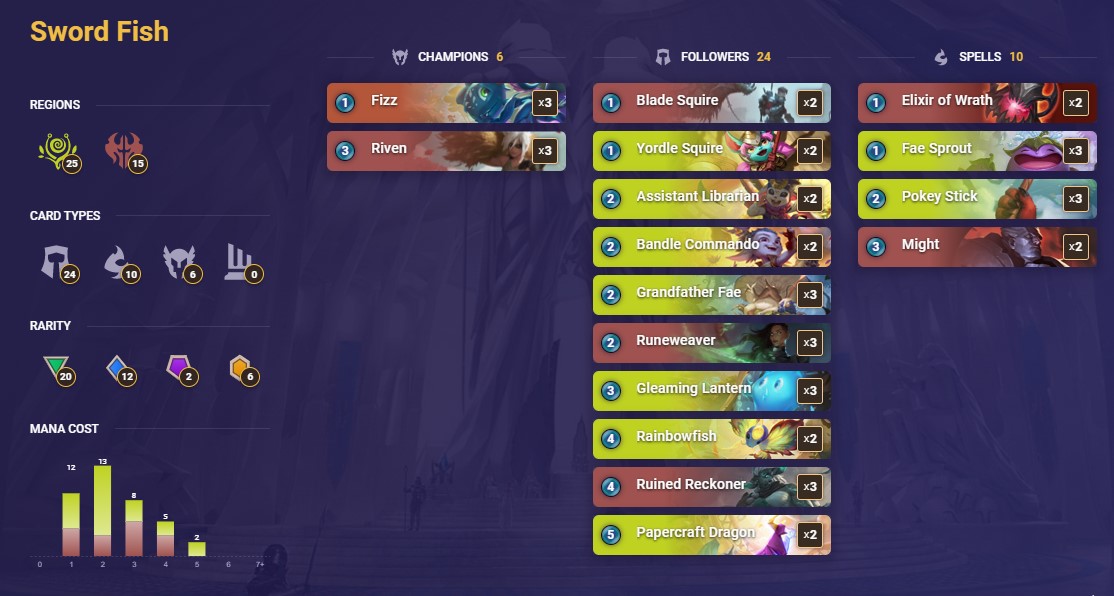
Deck Code: CECAIBIKECTADNYB3EAQCAQGFYBAGAYBA4AQIAYWAMAQGAYDAIAQGEY3AUCQUEYUSEA2OANRAEAA
Sword Fish
There’s a lot that is the same as the old Afaelios deck. We make lots of little units, and then we either swarm over the board and kill our opponent or we attach gigantic monsters to them. Our then not-so-little threats crash over into our opponent’s face for unreasonable amounts of damage.
We lose some of Targon’s inevitability with Aphelios, but the amount of combo kill potential we gain is huge. The Noxus version has Overwhelm significantly more consistently, courtesy of all of the Blade Shards and Might we have running around.
Even more important than that though, when we end up making one big threat and swinging for the hills, we effectively have a rally in our deck now. Ruined Reckoner can do some pretty unreasonable things with Attach units, or even just the odd Blade of the Exile. How do we get there though? Let’s check it out.
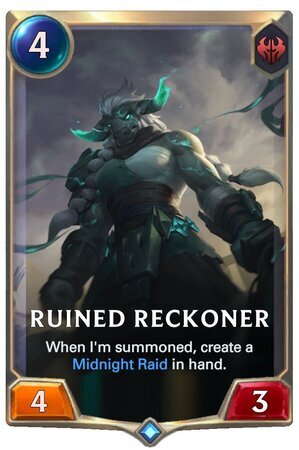
Phase One: Aggro or Combo?
As the game begins we have two modes that we get to start in. Which mode we choose will depend on what hand we get dealt of course, but also what matchup we find ourselves in.
With seven one drops and ten two drops, we are actually set up quite well to play the swarm game. And anyone who has ever seen a Gleaming Lantern stay in play for more than a turn or two knows what kind of ridiculous tempo threat it represents.
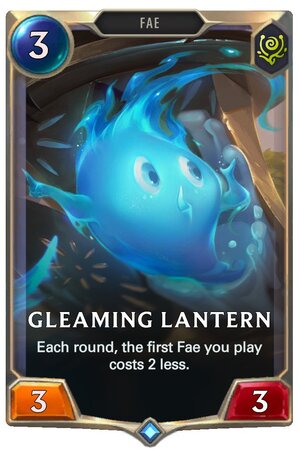
Against anyone who is moving slowly, we are happy to push in some early damage and then look for our combo pieces to get the last little bit in there. We don’t have any real burn, but a large amount of Elusive and Overwhelm will usually find a way to push what we need it to.
Conversely against a more aggressive or swift-moving opponent, we will need to assume the role of a combo deck. Our small units are there to trade and stall the board while we set up the necessary pieces, often swinging for most if not all of our opponent’s health in a single turn.
Phase Two: Finding the Moment
As we just said, this is a deck that is most definitely trying to kill its opponent as quickly as possible, but it also runs exactly three points of burn, all of which are Pokey Sticks. That’s a dangerous combination.
What that means is in almost every game with this deck you are going to be looking for your moment to push damage. More than many other archetypes you are going to find yourself “all in,” in a majority of your matchups, and you have to learn to be ok with that.
The play skill involved in this deck is all about making that all-in-moment as likely to work as possible. Can you bait out their important answers first? Can you make sure the unit you are sending in for the kill has Spell Shield, or is a Fizz, ready to ignore whatever they point at it?
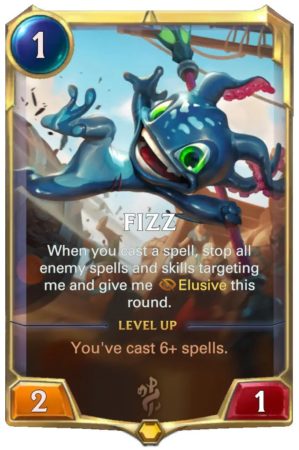
Against a deck that may have solid answers to what you’re doing, can you set up more than one threat coming crashing in for lethal at the same time? Riven is often quite helpful in this regard.
The Riven sword, while it can only be used once, gets to act an awful lot like a low mana commitment attaches unit during your big turn. Two big threats on the board at once is getting to the point where even hard control decks will have problems answering the questions you are asking.
Phase Three: Scramble
For the first time since I have started writing these guides, we’ve gotten to a deck that really doesn’t want to end up in its third phase. The third phase of this deck is when its big all, in turn, doesn’t quite get it done and you have to figure out what the heck you are doing now.
That said, don’t despair. If your opponent isn’t pressuring you then you can often set up another large turn. Sometimes you’ll still have the pieces lying around to go for it again. Find another source of Overwhelm or re-attach that Rainbowfish and get back to swinging away.
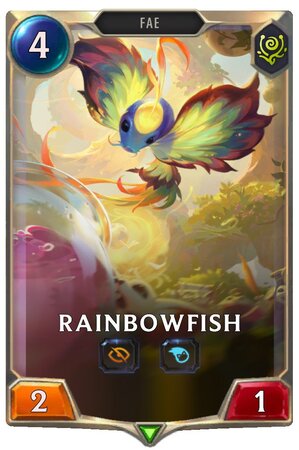
One the cool things about this deck is its ability to re-threaten lethal, both in and out of combat. In combat, you can respond to things like Freezes or Quicksand by re-pumping your unit to get back into lethal range. This is why figuring out how much you want to commit pre-attack is so important.
Out of combat, many of your tools will either find their way back into your hand or be replicate-able, so you can try again two turns from now. Get another Overwhelm shard, finish making the blade, and get back to it.
Also, remember that we can win with this deck simply by going wide. If your opponent gets to focus on the one large threat you are creating then simply swarming the board with Owlcats and laughing as they die from a thousand tiny pecks is a totally reasonable way to win.
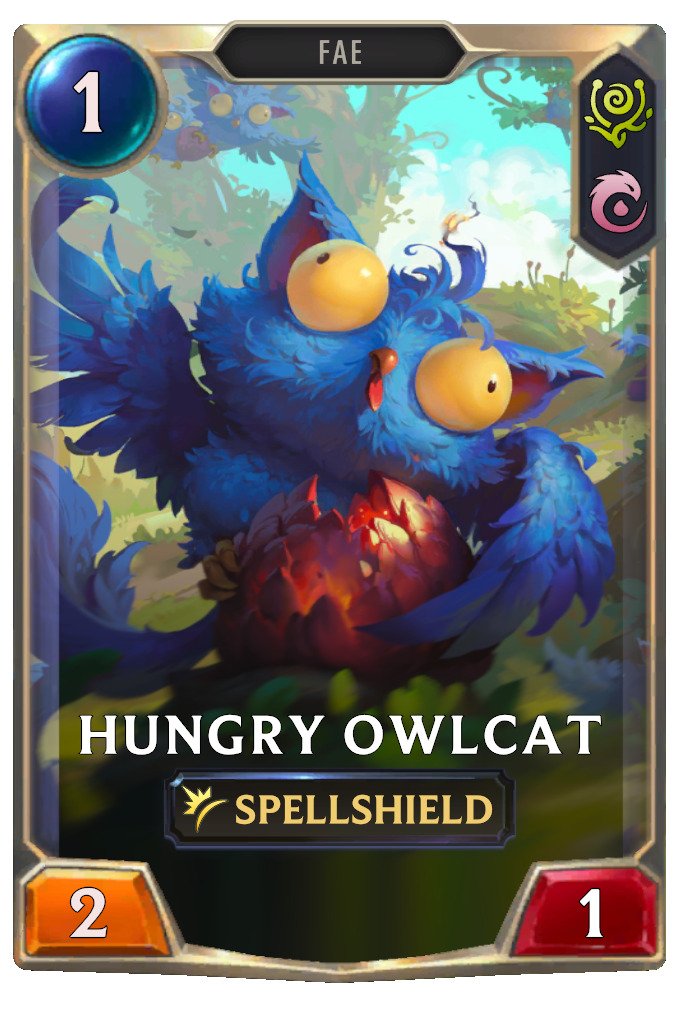
Conclusion
Swordfish is a fun, proactive, powerful, and extremely high-skill ceiling deck. It will reward your ability to think through your lines turns in advance, and it won’t need you to spend thirteen turns of gameplay to do it. This one gets the WhatAmI stamp of approval 100%
If you have any questions, feel free to ask WhatAmI during his streams (Tuesday-Thursday around 3PM PST and weekends for tournaments).
WhatAmI streams at twitch.tv/xxwhatamixx Tuesday-Thursday
Subscribe to our newsletter:
Don’t miss out on all of the latest LoR content!
 Download APP
Download APP